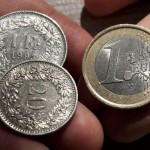On Wednesday gold for delivery in April traded within the range of $1,196.50-$1,212.90. Futures closed at $1,207.50, inching down 0.03% on a daily basis. It has been the sixth drop in the past 13 trading days and also a fourth consecutive one. Last week gold added 7.02% to its value, while marking its fourth straight weekly advance and also the sharpest one in at least 1 year. The precious metal has gone up 8.14% so far during the current month, following another 5.29% gain in January. The latter has been the first advance in three months.
On the Comex division of the New York Mercantile Exchange, gold futures for delivery in April were down 0.05% on Thursday to trade at $1,206.90 per troy ounce. The precious metal went down as low as $1,205.80 during mid-Asian trade, while the current daily high was at $1,210.90 per troy ounce.
It became evident that Federal Reserve policy makers were concerned over recent disappointing reports on spending and production in the country, while also citing commodity and financial market developments and the possibility of a further slowdown in some emerging economies as potentially harmful factors for US economic activity.
According to the Minutes from the Federal Open Market Committee (FOMC) policy meeting held on January 26th-27th, released on Wednesday: “Regarding the foreign economic outlook, it was noted that the slowdown in Chinas industrial sector and the decline in global commodity prices could restrain economic activity in the EMEs and other commodity-producing countries for some time. Participants discussed recent developments in China, including the possibility that structural changes and financial imbalances in the Chinese economy might lead to a sharper deceleration in economic growth in that country than was generally anticipated.”
“Almost all participants cited a number of recent events as indicative of tighter financial conditions in the United States; these events included declines in equity prices, a widening in credit spreads, a further rise in the exchange value of the dollar, and an increase in financial market volatility.”
“In assessing whether economic conditions had improved sufficiently to warrant a further increase in the target range for the federal funds rate at this meeting, members agreed that labor market data had generally been stronger than anticipated at the time of the December meeting, and some members noted that wage growth had picked up. However, the spending and production data generally had been disappointing–in particular, information regarding indicators of manufacturing activity, consumption expenditures, and inventory investment.”
In China, the national statistical office said annual consumer prices rose 1.8% in January, falling short of market expectations, and following a 1.6% surge in December. Januarys annual inflation has been the highest since August 2015, when prices went up 2.0%. Food prices in the country soared 4.1% in January from a year ago, while cost of non-food items increased 1.2%. Additionally, prices of consumer goods surged 1.5%, while cost of services went up 2.2% during the same period.
Today gold trading may be influenced by the weekly report on US initial jobless claims. The number of people in the United States, who filed for unemployment assistance for the first time during the business week ended on February 12th, probably increased to 275 000, according to market expectations, from 269 000 reported in the preceding week. The latter has been the lowest number of claims since the business week ended on December 18th, when 267 000 claims were reported. The Department of Labor is to release the weekly data at 13:30 GMT.
At the same hour the Federal Reserve Bank of Philadelphia is expected to release the official results from its monthly survey on manufacturing activity. The respective gauge probably remained in negative territory for a third consecutive month in February, coming in at a reading of -2.8, according to the median forecast by experts. In January the manufacturing PMI stood at -3.5. In case the index improved more than projected in February, this would have a moderate bullish effect on the US dollar and a moderate bearish effect on gold, respectively.
Daily and Weekly Pivot Levels
By employing the traditional calculation method, the daily pivot levels for gold are presented as follows:
Central Pivot Point – $1,205.63
R1 – $1,214.77
R2 – $1,222.03
R3 – $1,231.17
S1 – $1,198.37
S2 – $1,189.23
S3 – $1,181.97
By using the traditional method of calculation again, the weekly pivot levels for gold are presented as follows:
Central Pivot Point – $1,221.63
R1 – $1,278.27
R2 – $1,317.43
R3 – $1,374.07
S1 – $1,182.47
S2 – $1,125.83
S3 – $1,086.67





